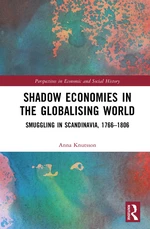From West Indian sugar and bottles of Southeast Asian arrack to French red wines, English felt cloth, and Mediterranean lemons, many global wares ended up in the Scandinavian borderlands during the late eighteenth century. This book explores how and why these goods came to be there and analyses what smuggling can reveal about the emergence of global trade, the formation of the nation state, and the development of consumer society in Europeâs northernmost outskirts. This book shows that the global underground was ubiquitous in the Nordic countries and fundamentally altered them, politically, economically, socially, and culturally. Through re-evaluating the role of smuggling the book complements and challenges established historical accounts about state building, market dynamics, consumer culture, and ideas and identity. It also offers a roadmap for how to think about illegal global trade and how to approach this notoriously difficult research field. By integrating illegality, the book aims to show how an illicit web entangled often overlooked âperipheralâ territories with traditional âportals of globalisationâ and proposes a novel take on early modern globalisation and the paths to modernity in the European hinterlands. To achieve this a wide variety of sources are used including court records, administrative sources, diaries, ambassadorial correspondence, and maps in various languages including Swedish, Finnish, Norwegian, English, and French. This book makes a significant contribution to the literature on economic history, the first wave of globalisation, the study of shadow economies, and Scandinavian history more broadly.
Price history
Dec 31, 2022
€43.35

